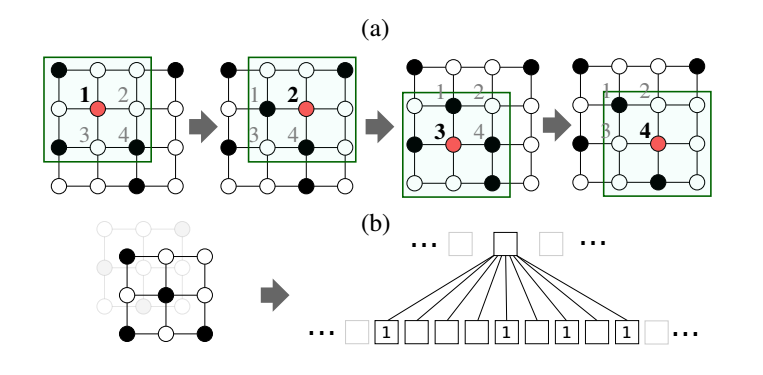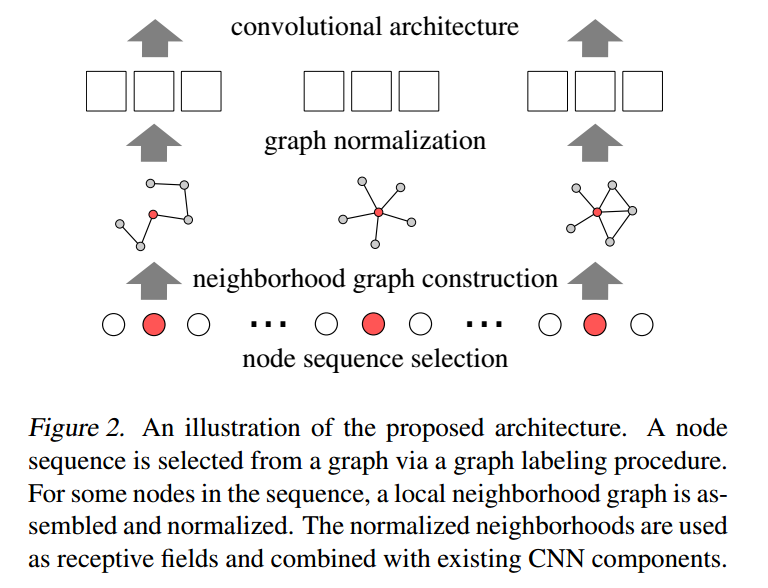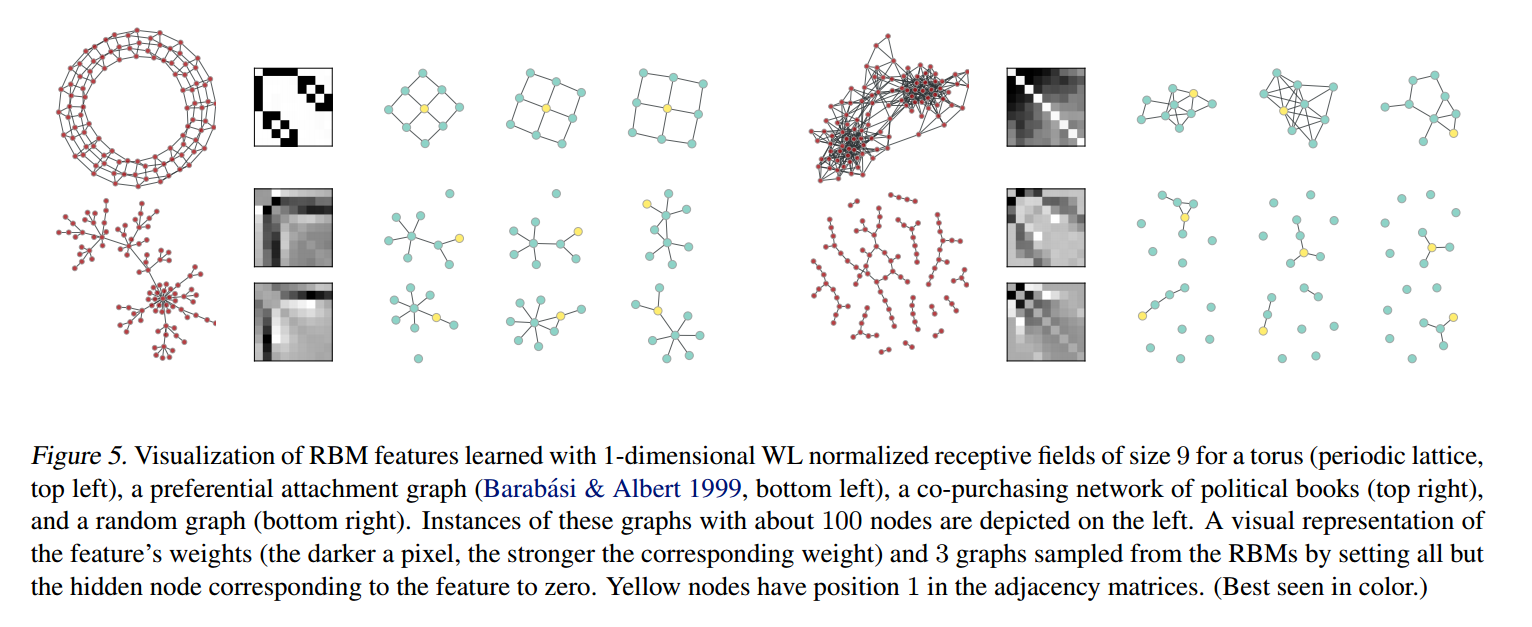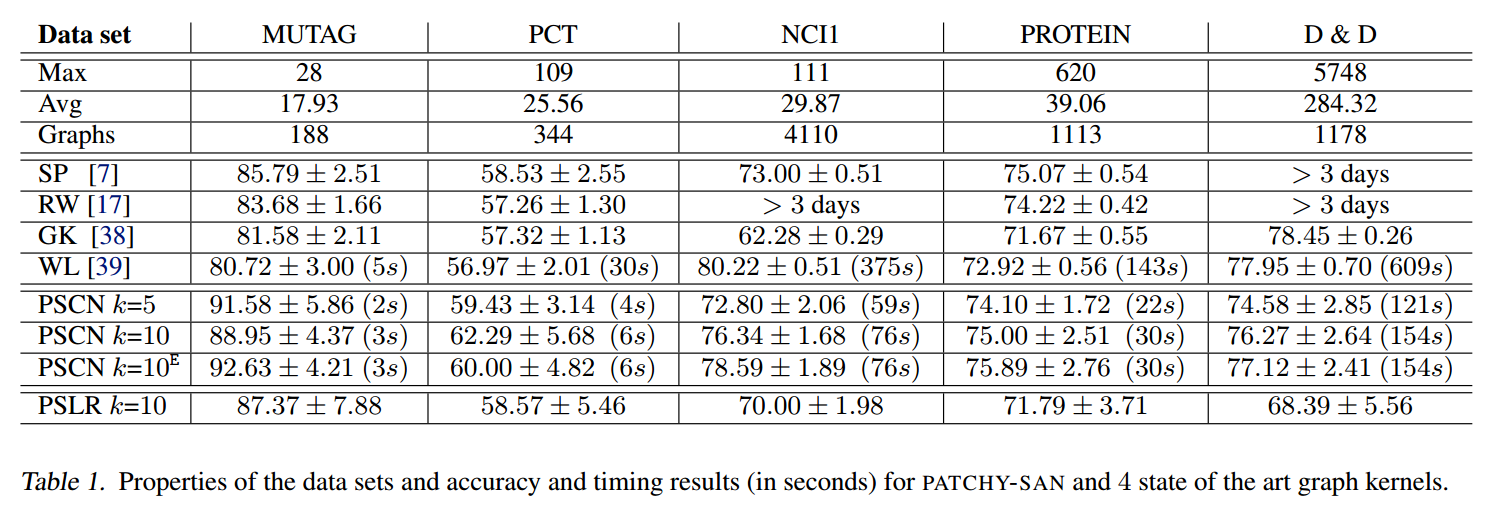Learning Convolutional Neural Networks for Graphs
2018-01-17 21:41:57
【Introduction】
这篇 paper 是发表在 ICML 2016 的:http://jmlr.org/proceedings/papers/v48/niepert16.pdf

上图展示了传统 CNN 在 image 上进行卷积操作的工作流程。(a)就是通过滑动窗口的形式,利用3*3 的卷积核在 image 上进行滑动,来感知以某一个像素点为中心的局部图像区域(local image patch);(b)感受野所创建的 node sequence,以及由超参数所决定的感受野的形状。
本文将 CNN 拓展到大规模的基于 graph 的学习问题当中,主要考虑如下两类问题:
1. 给定一组 graphs,学习一个函数,使之可以在 unseen graphs 用于 classification 或者 regression problem。
The nodes of any two graphs are not necessarily in correspondence. For instance, each graph of the collection could model a chemical compound and the output could be a function mapping unseen compounds to their level of activity against cancer cells.
2. 给定一个大型的 graph,学习 graph 的表示,使其可以用于推理不可见的 graph 属性,例如:node types 或者 missing edges。
本文提出一种学习表示的框架来进行 有向图 和 无向图的分类。这个图可能拥有多个离散和连续属性的 nodes 和 edges,可能包含多种类型的 edges。与传统CNN 相比,我们从 input graphs 中获得 locally connected neighborhoods。这些近邻 可以有效的产生,并且作为卷积结构的感受野,允许该框架学习有效的 graph representation。
For numerous graph collections a problem-specific ordering (spatial, temporal, or otherwise) is missing and the nodes of the graphs are not in correspondence. In these instances, one has to solve two problems:
(i) Determining the node sequences for which neighborhood graphs are created;
(ii) computing a normalization of neighborhood graphs, that is, a unique mapping from a graph representation into a vector space representation.
而本文所提出的 graph representation 的方法,很好的解决了上述两个问题。具体的来说,可以分为如下几个步骤:
1. 对于每一个输入的 graph,首先确定节点及其次序;(For each input graph, it first determines nodes (and their order) for which neighborhood graphs are created. )
2. 对于每一个节点,包含 k 个节点的近邻 被提取并且进行归一化,即,将其唯一的映射到固定长度的线性序列;归一化的近邻 可以看做是一个节点的感受野;(For each of these nodes, a neighborhood consisting of exactly k nodes is extracted and normalized, that is, it is uniquely mapped to a space with a fixed linear order. The normalized neighborhood serves as the receptive field for a node under consideration.)
3. 最后,特征学习成分,例如 卷积、全连接层 被组合起来作用于归一化的 graphs。(Finally, feature learning components such as convolutional and dense layers are combined with the normalized neighborhood graphs as the CNN’s receptive fields. )

【流程】下面具体介绍一下构建卷积分片的步骤以及最后的卷积结构:
-
节点序列选择:为了对图中所有的节点进行标号排序,本文引入了图标号函数,将图中的节点集合根据向心性(节点的度、中心度等)映射为有序的节点序列。从该序列中根据一定的间隔s隔段选取w个节点构成最终的节点序列。
-
邻居节点收集:对于上一步获得的节点序列中的每一个节点,利用广度优化搜索扩展邻居节点,和源节点一起构成一个k大小的邻域集合。
-
子图规范化:对于一个邻域集合的规划化过程如下图所示。对邻域集合中的个节点按照标号函数k进行排序,得到接受域。那么,对于节点的属性,k个节点属性值构成了一个输入通道,对于边的属性,k^2个属性值也构成了一个输入通道。我们可以分别用一维的卷积层来处理这两种输入通道(对于节点属性卷积层长度为k,对于边属性卷积层长度为k^2)



Reference:
1. 知乎博客:https://zhuanlan.zhihu.com/p/27587371
2. 对应的 PDF:http://www.matlog.net/icml2016_slides.pdf